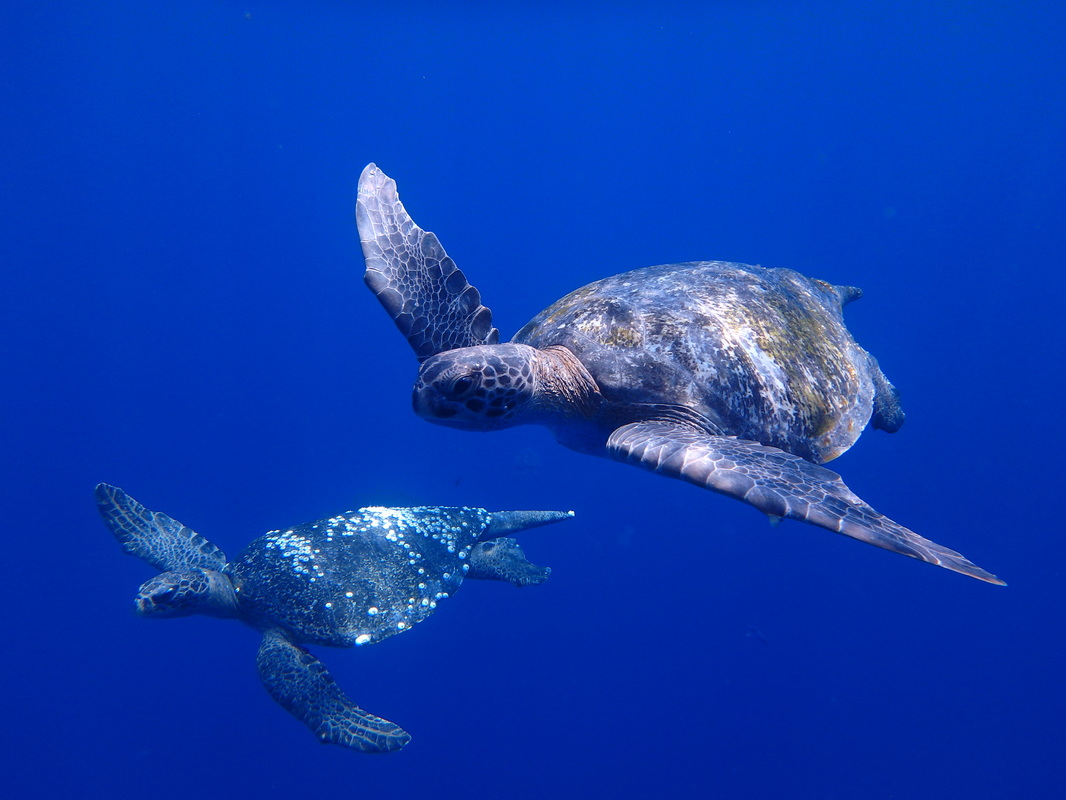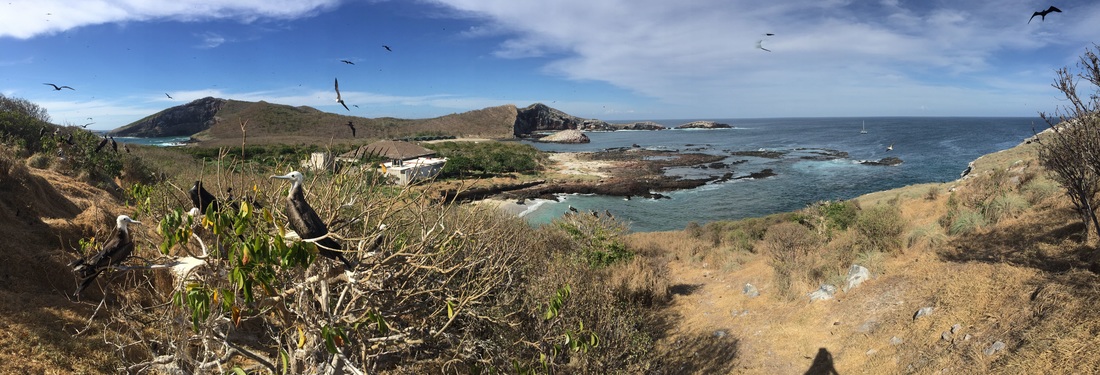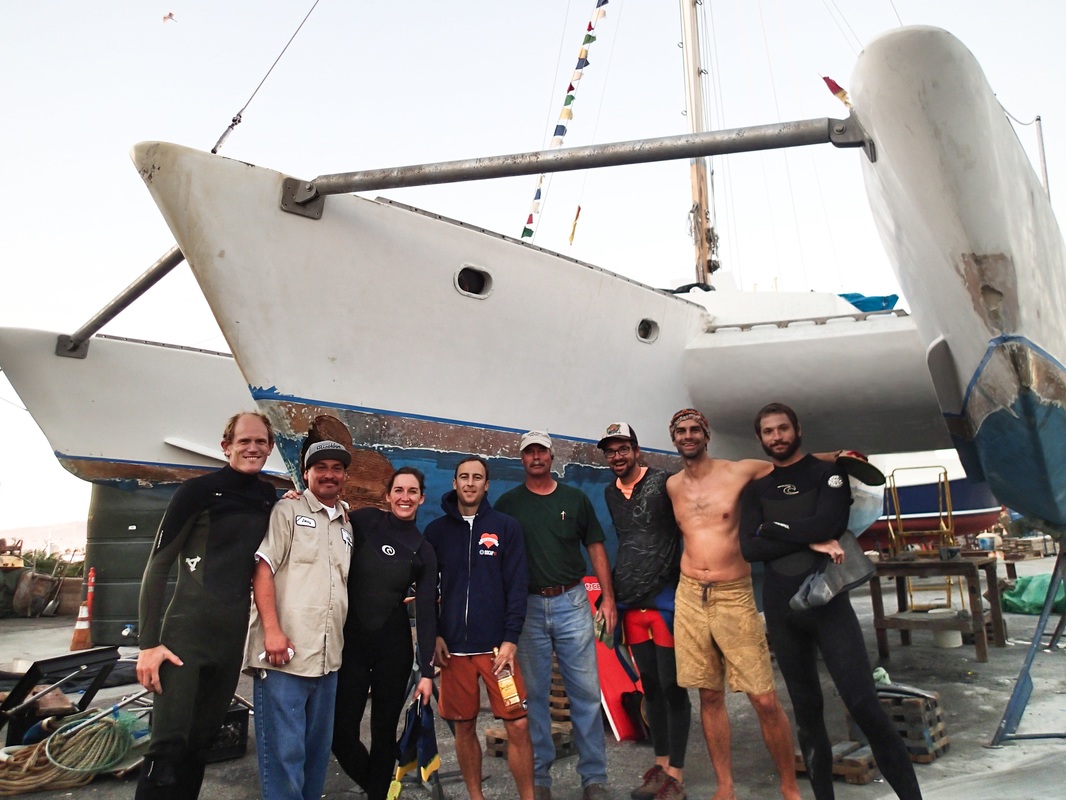ASC Microplastics Adventurer
I gaze up at a dizzying school of swarming silver jacks, holding my breath, for a brief moment, time stands still. Free diving the remote Isla Isabella 80 miles off the Central Mexican coast surrounded by hundreds of pelagic fish provides a stark reminder that I’ve entered the food chain. I pop my head up and marvel at the isolated rock, laughing with delight.
After nearly two months on the boat, it still feels surreal to be sailing down the Pacific coast of Central America with some of my closest friends, surfing, diving and exploring as we go.
Making our way south, we’re visiting protected marine areas and taking water samples for ASC’s microplastic research. Just a year ago, none of us would’ve imagined that we’d be visiting this Jurassic-like island, made famous by Jacques Costeau and surrounded by thousands of squawking blue-footed boobies and soaring frigate birds.
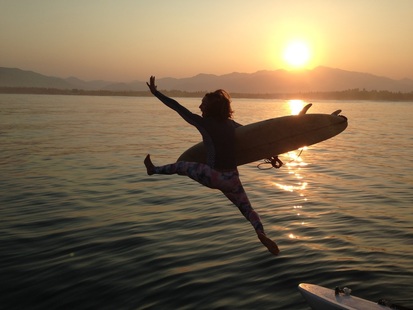 First Mate Sabrina heads out for a sunrise surf on the Guerrero coastline.
First Mate Sabrina heads out for a sunrise surf on the Guerrero coastline.
We’re excited about ASC’s innovative way of sourcing scientific data—as a crowd-funded, boot-strapping enterprise ourselves, we know the value of rallying resources to accomplish large tasks quickly. On the Green Coconut Run, we are journeying (and sampling) along the Baja peninsula, mainland Mexico, and south to Panama this first year, before heading across the South Pacific. Three months into the voyage, we have sampled 22 sites, of which 17 were remote places and five were near metropolitan areas for comparison.
“While we consider the ocean a resource, we will keep abusing it,” said Four Arrows, a Native American leader we met during our travels. “Once we see the ocean as our relative—the fish and corals as our brother and sisters—we will love and protect it.”
We were inspired by Four Arrows’ work with local fishermen in Arroyo Seco, Mexico to protect a four-square-kilometer area of mangrove and ocean with excellent fish habitat.
With the Green Coconut Run, we, too, want to inspire people to embrace a healthy, holistic relationship with the ocean. On a basic level, that means keeping trash out, and keeping marine habitats alive. We dream of pooling funds together, as Four Arrows is doing, to crowd-source new protected areas—just as we are crowd-sourcing a sailboat adventure and microplastics data for ASC. It’s a novel and exciting tool with potential for scaling.
Come join us! The Green Coconut Run is funded by guests joining the boat and by the patrons for our SV Aldebaran. Visit greencoconutrun.com to follow our journey.
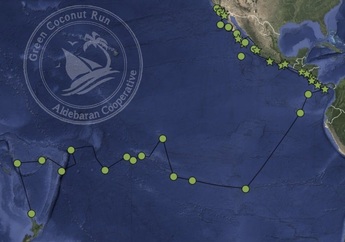 Green Coconut Run route map across the Pacific from California to New Zealand.
Green Coconut Run route map across the Pacific from California to New Zealand.
This journey was born when our group of 30-something professionals, all working in the environmental and health fields, found ourselves yearning for something more. We scrolled through blogs, pawed through magazines and daydreamed about lifestyles of adventure while maxing out weekends and vacation. And then we put our heads together to achieve a common dream: to explore the tropical South Seas with our sailboat. We circumvented the requisite decades worth of planning and saving by crowd-sourcing the adventure.
Through a co-op model, our friends each banked time on the voyage, and we raised the needed funds to fortify our 42’ trimaran Aldebaran for the journey—along with the blood, sweat and tears needed to ready the boat for the greatest adventure of our lives.
Realizing the rare opportunity at hand, we set our intentions on making a positive impact for ocean conservation. We wanted to visit and promote a network of marine protected areas across the Pacific, inspired by the restoration successes of California’s Channel Islands. As a spin-off on the “Coconut Milk Run,” the famous sailing route along the South Seas, we coined our route the “Green Coconut Run,” and set a course linking wild and protected areas from California to New Zealand.

